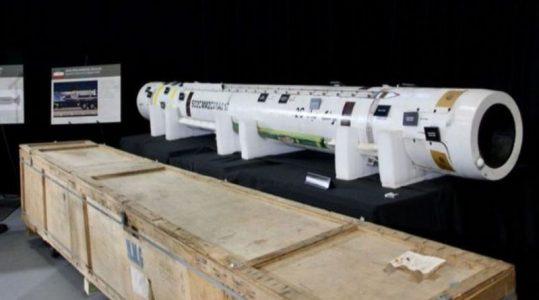
Presidential candidates need a plan for reducing nuclear terrorism risks
As presidential candidates hit the campaign trail this year, voters should ask them: “What’s your plan for keeping nuclear weapons and the materials to make them out of terrorist hands?” Every candidate who is serious about national security should have an answer to that question; every president for more than two decades, including Donald Trump, has described nuclear terrorism as one of the gravest dangers the United States faces. There should be no disagreement between Republicans and Democrats — or between the United States and other countries — when it comes to measures to prevent terrorists from ever getting and using a nuclear bomb or sabotaging a major nuclear facility.
Strengthening security for nuclear weapons and materials is the most effective way to reduce the risk of nuclear terrorism, but as we document in a new report, “Revitalizing Nuclear Security in an Era of Uncertainty,” global efforts to do so are losing momentum. That is creating a dangerous new era — one in which uncertainty about how terrorist threats might evolve is growing, and it is not clear if nuclear security protections against them will keep pace.
President Trump and his administration have offered nuclear security strong rhetorical support; the president’s recent plan for countering weapons of mass destruction terrorism calls securing nuclear stockpiles “among the most urgent security requirements of our age.” The strategy supports cooperation with foreign partners to strengthen nuclear security; highlights the significance of international institutions; and emphasizes the importance of existing U.S. nuclear security programs.
So far, however, budgets and diplomatic priorities have not matched the words. President Trump has proposed substantial cuts in funding for the main programs working to secure nuclear materials around the world, and may do so again in the budget soon to be released. Two-and-a-half years after the last nuclear security summit, and with the president focused on trade deficits and how much allies pay for their security, the Trump administration is not doing enough to help other countries and international agencies follow through on the commitments they have made to strengthening nuclear security.
The United Nations and other international institutions have not made strengthening nuclear security a priority as many once hoped they would. The “action plans” these organizations agreed to at the last nuclear security summit have led to little action. Nuclear security cooperation between the United States and Russia has almost completely lapsed. While major threats such as ISIS and al Qaeda have been significantly weakened, technological advancements — including terrorist use of drones and cyber attacks — pose worrisome, ever-evolving threats that require ever-improving responses.
Many of these problems did not begin with the Trump administration — budgets for U.S. nuclear security programs have been declining for nearly a decade. In this polarized, partisan time, Republicans and Democrats should find a way work together to craft and implement a focused plan to overcome the obstacles to effective nuclear security around the world, reducing the risk of nuclear theft and sabotage to the lowest possible level. The plan must recognize this is a global responsibility — calling on leaders in all countries that possess weapons-usable nuclear material to commit to taking personal responsibility for preventing nuclear theft or sabotage, and recognizing that the U.S president, in particular, should lead by example.
Such a plan should include several key elements. First, U.S. programs to help countries secure nuclear stockpiles should be expanded, focusing on foundational elements of effective nuclear security: sustainably protecting weapons-usable nuclear material against the full range of plausible adversary threats, including insiders within nuclear organizations; building strong security cultures within nuclear organizations, focused on continuous improvement in security performance; conducting realistic testing and assessment of nuclear security systems; and reducing the number of sites with nuclear weapons and weapons-usable nuclear material to the absolute minimum necessary. Expanded funding will be needed — though the amounts required are small by comparison to the security stakes.
Second, developing strategies for reducing complacency — one of the most insidious impediments to strengthening nuclear security — is essential. These would include greater sharing of information on nuclear terrorism threats, real security incidents, and potential nuclear vulnerabilities among governments, international bodies, and nuclear organizations around the world.
Third, bolstering frameworks for international nuclear security cooperation is critical. That means convincing more countries to join key agreements and initiatives, and working to ensure they are implemented effectively; strengthening the International Atomic Energy Agency’s nuclear security programs; and building effective international forums for discussing what has been accomplished and what needs to be done next.
In particular, despite escalating U.S.-Russia tensions, it is long past time to find a way to rebuild cooperation that serves both countries’ national interests, including in nuclear security. Russia has the world’s largest stocks of nuclear weapons and materials in the world’s largest nuclear complex, and American policymakers ignore that fact at great peril.
There is a significant partisan gulf in Washington today, but there are some national security issues that transcend politics. We need President Trump, and those who would seek to follow him, to lay out their vision of a world of strong nuclear security and their proposed path for getting there.
Source: The Hill





